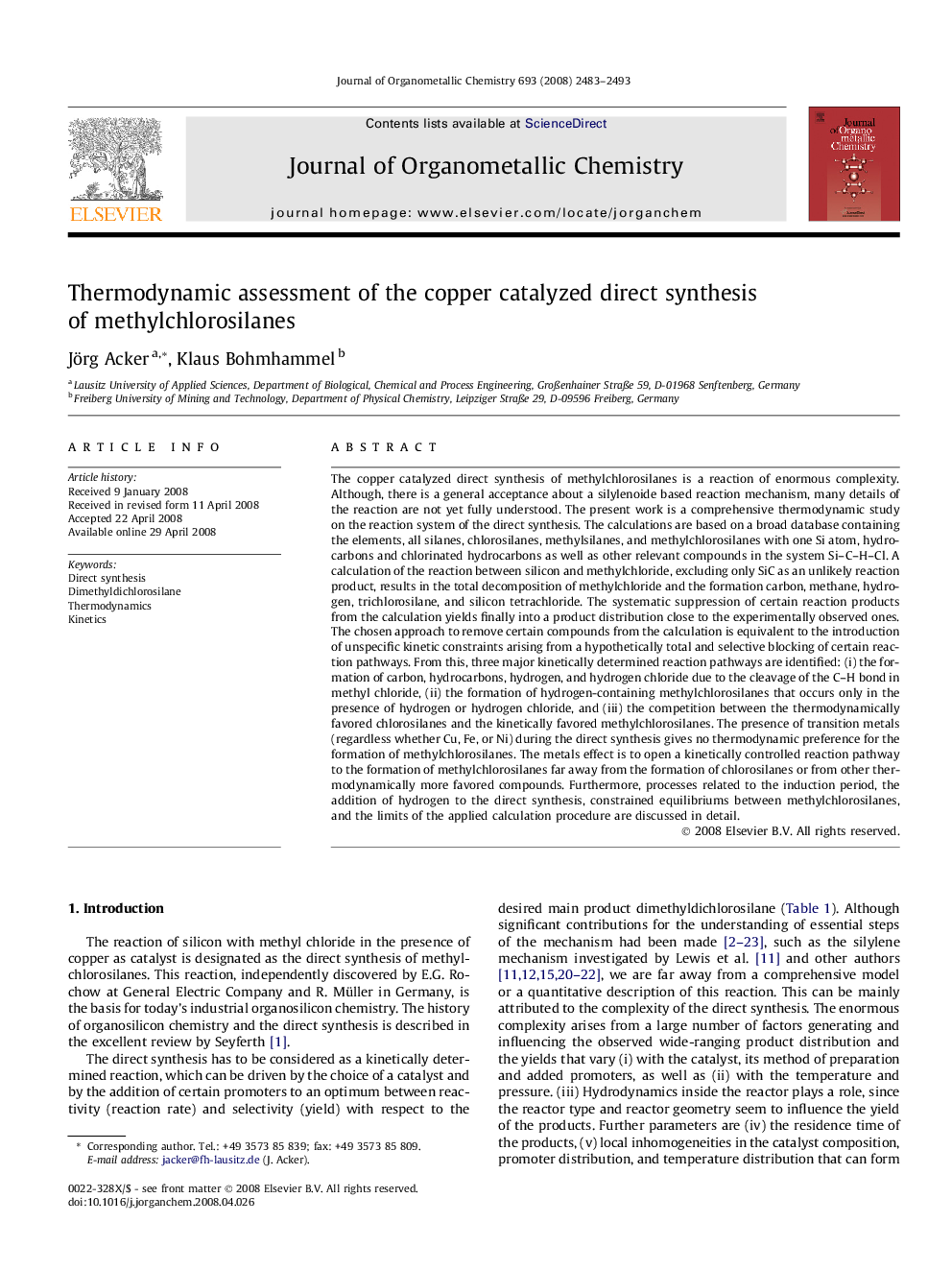| Article ID | Journal | Published Year | Pages | File Type |
|---|---|---|---|---|
| 1327946 | Journal of Organometallic Chemistry | 2008 | 11 Pages |
The copper catalyzed direct synthesis of methylchlorosilanes is a reaction of enormous complexity. Although, there is a general acceptance about a silylenoide based reaction mechanism, many details of the reaction are not yet fully understood. The present work is a comprehensive thermodynamic study on the reaction system of the direct synthesis. The calculations are based on a broad database containing the elements, all silanes, chlorosilanes, methylsilanes, and methylchlorosilanes with one Si atom, hydrocarbons and chlorinated hydrocarbons as well as other relevant compounds in the system Si–C–H–Cl. A calculation of the reaction between silicon and methylchloride, excluding only SiC as an unlikely reaction product, results in the total decomposition of methylchloride and the formation carbon, methane, hydrogen, trichlorosilane, and silicon tetrachloride. The systematic suppression of certain reaction products from the calculation yields finally into a product distribution close to the experimentally observed ones. The chosen approach to remove certain compounds from the calculation is equivalent to the introduction of unspecific kinetic constraints arising from a hypothetically total and selective blocking of certain reaction pathways. From this, three major kinetically determined reaction pathways are identified: (i) the formation of carbon, hydrocarbons, hydrogen, and hydrogen chloride due to the cleavage of the C–H bond in methyl chloride, (ii) the formation of hydrogen-containing methylchlorosilanes that occurs only in the presence of hydrogen or hydrogen chloride, and (iii) the competition between the thermodynamically favored chlorosilanes and the kinetically favored methylchlorosilanes. The presence of transition metals (regardless whether Cu, Fe, or Ni) during the direct synthesis gives no thermodynamic preference for the formation of methylchlorosilanes. The metals effect is to open a kinetically controlled reaction pathway to the formation of methylchlorosilanes far away from the formation of chlorosilanes or from other thermodynamically more favored compounds. Furthermore, processes related to the induction period, the addition of hydrogen to the direct synthesis, constrained equilibriums between methylchlorosilanes, and the limits of the applied calculation procedure are discussed in detail.
Graphical abstractThe copper catalyzed direct synthesis of methylchlorosilanes is modeled by thermodynamic equilibrium calculations. By the introduction of defined kinetic constrains, which are equivalent to a selective blocking of certain reaction pathways, the experimentally observed product distribution can be modeled. The obtained results are discussed in light of possible reaction pathways, orders of product stabilities, and the impact of varying reaction conditions.Figure optionsDownload full-size imageDownload as PowerPoint slide
